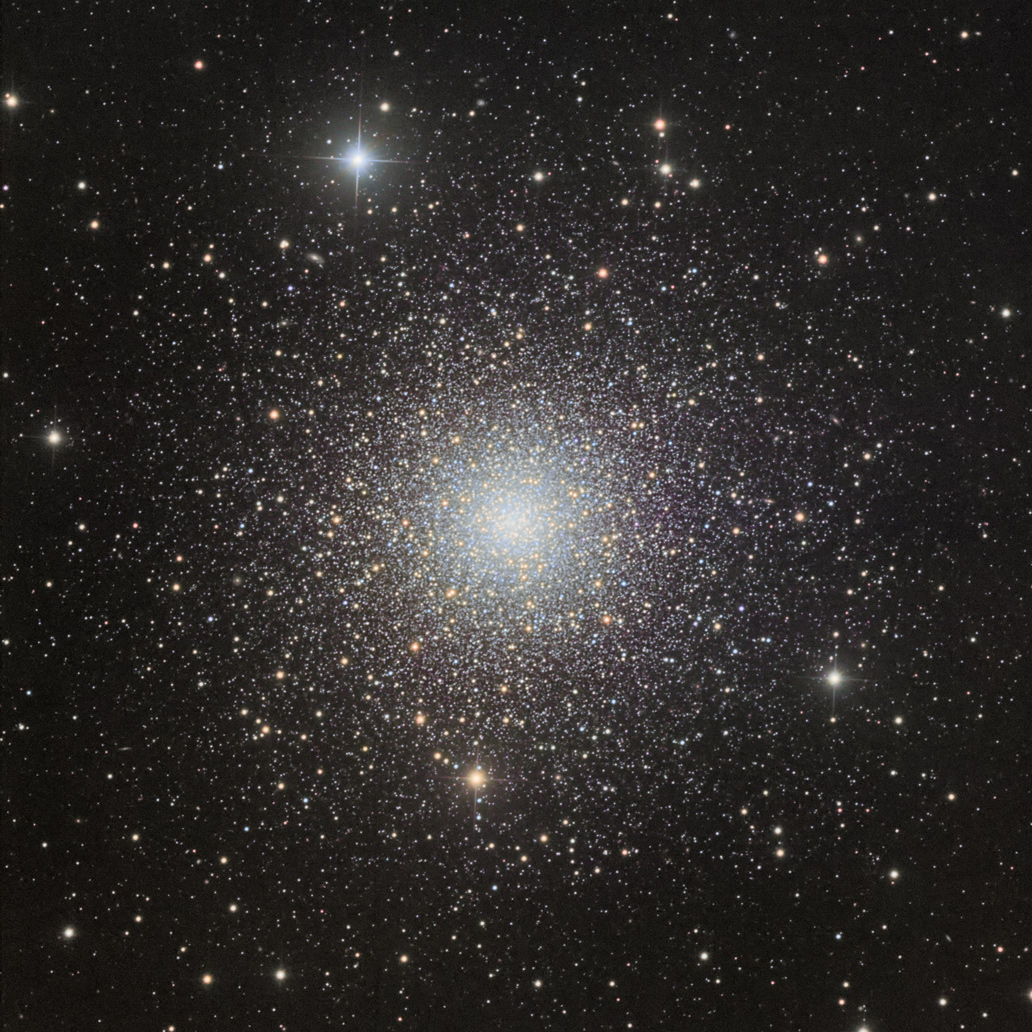

M3: A globular cluster is a group of ancient stars (M3 is thought to be about 11.4 billion years old--although some estimate the age as 8 billion years; by comparison, our sun is about
4.6 billion years old; our galaxy is about 13.5 billion years old, and the universe is thought to be 13.8 billion years old), gravitationally bound to each other, orbiting the core of its
associated galaxy.
M3 is about 34,000 light years from Earth, and is about two-thirds the angular size of the full moon when viewed from very dark skies; it is roughly 220 light years across. It shines at
magnitude 6.2 (which might be visible to the naked eye in absolutely dark skies). It has a mass equal to about 800,000 times that of our sun, and contains as many as 500,000 stars
(for comparison, there are estimated to be no more than 14,000 stars within 100 light years of earth, which is a bubble about that same size). It has an unusual concentration of
blue-straggler stars (stars that are much less old than the other stars in the cluster, probably formed from
collisions or other interactions between stars in the cluster), and its core is unusually dense.
Copyright 2020 Mark de Regt